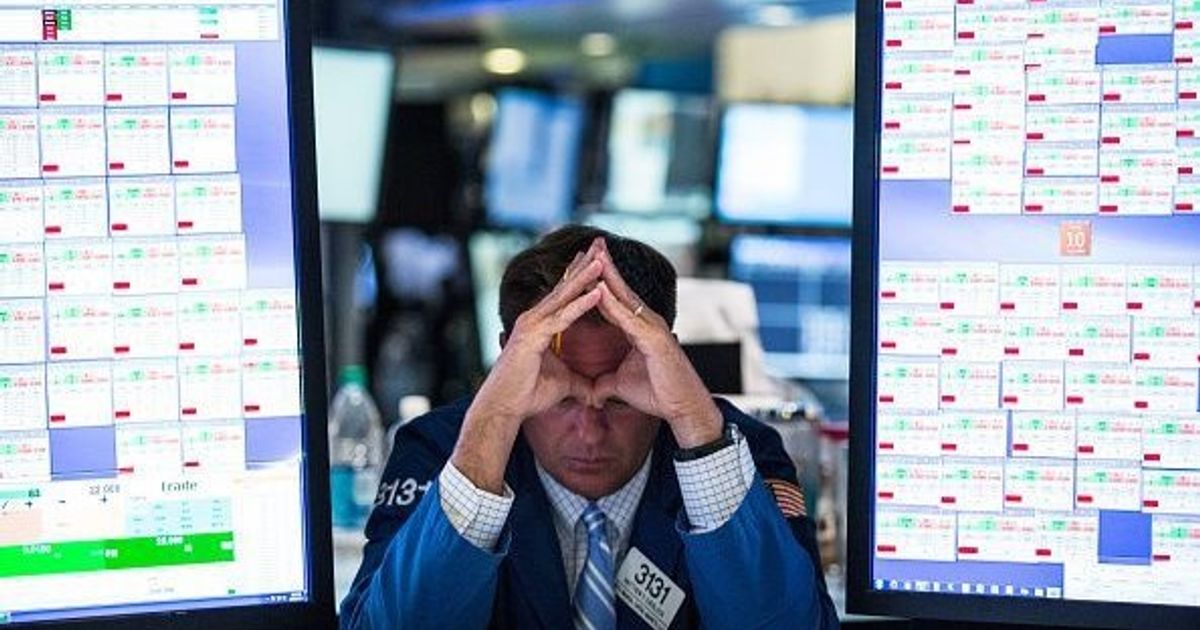Trading tensions between China and the United States had a new blow to Wall Street on Tuesday, and led to a decline in stocks, cryptocurrencies and oil, while the demand for safe ports of currencies to gold is reinforced. After a temporary recovery, the S&P 500 index fell after US President Donald Trump said he could stop the oil trade with China, which injected a new dose of tension into relations between the two largest economies in the world. His statements also came after Beijing imposed sanctions on American units belonging to a South Korean shipping giant, which increased the dispute over maritime domination. “Since the issue of rates and trade is the issue that has caused problems for the stock market this year, everyone will watch its development closely,” says Matt Maley of Miller Tobacco. Despite the decline in the most important US index, shares of crop trading companies such as “Archer-Daniels-Midland” and “Bunge Global SA” have risen, and the index of major banks jumped after strong results of huge financial institutions, which practically opened the earnings announcement season. Earlier in the session, shares rose after the comments of the Federal Reserve chairman Jerome Powell increased the bet on a rate cut in October, amid the weakness in the labor market. Expectations that the Fed will stop reducing its two-year budget effects has stabilized near their lowest levels since 2022, and Powell has also indicated that the central bank could cease to reduce its balance sheet in the coming months, which is an important step in maintaining liquidity in the overnight financing markets. Michael Feroli of JP Morgan Chase & Co. said that Powell’s remarks were a ‘strong confirmation’ of betting on a rate cut at the next meeting of the bank. While Krishna Guha of Evercore said Powell’s assessment of the balance of dual policy objectives (labor market and inflation) confirms that the bank is on its way to alleviate monetary policy. As for Gennadi Goldberg and Oscar Muñoz of TD securities, they believe that the Fed chairman “paved the way to end the quantitative relief in the coming months,” and they added: “We believe that the Fed will announce the end of reducing its balance sheet on the October meeting.” The two strategies added that the balance sheet is likely to remain stable for some time, but at the end of the year’s pressure, the bank could push to resume the active purchases of the Treasury accounts until 2026. They said that the termination of quantitative relief to support exchange distribution should reduce more capacity in the financing markets. They expected the Fed to lower in October and December, and that it implemented three more cuts in 2026 to reach a final interest rate of 3%. Swaps currently price price in approximately 1.25 percentage points of rate cut by the end of next year, from the current range of 4% to 4.25%. Powell balances inflation and the labor market Scott halstein of Global he added, “Reducing interest rates, it poses the risk of accelerating inflation, while interest rates are high at risk for the labor market.” He suggested that the bank would lower interest rates in October and December, but called on investors to prepare for various scenarios, as Powell tries to keep all options open. Halstein has added that markets have risen uninterrupted in recent months, and a minor decline can be “a healthy thing”, adding: “There is much to evaluate it against a poor labor market, trade policy uncertainty, government government, resilient consumers and strong corporate fundaments. The general scene is still positive, but there are many contradictions for investors. ‘ The fear of a ‘bubble’ in artificial intelligence has shown a recording conducted by ‘Bank of America Corp’ that a record percentage of the global fund managers sees that artificial intelligence shares are in a bubble, after a feverish increase this year. About 54% of October poll participants said technology stocks look expensive in a shift from the previous month. In the past, about half of them have reduced these concerns. Concerns over the worldwide stocks also peaked in the latest survey. “It’s hard not to see a little exaggeration in different sectors,” Citigroup CFO Mark Mason said to a earnings call in the third quarter in response to a question about artificial intelligence. He added: “I am comfortable with our business performance and our ability to serve customers, but it is difficult to look at stock valuations and multiples today without believing that there are overvalued and perhaps bubbles sectors. We will see how things develop over time.” The beginning of the earnings season under the microscope was the not -on -start of the earnings season today, and EToro’s Brett Kenwell said markets historically tend to perform better than market expectations, and if that happens again, it can provide some reassurance in a time when volatility returned. He added: “The earnings season contributed to the stability of the markets in April amid sharp fluctuations, as banks provided indicators about consumers.” Management teams became more confident during the summer, and investors now hope for another positive update. “He continued: ‘Away from the banks, investors will look closely. ‘Technology companies still spend large amounts on AI architecture, and if recent news is any indication, the spending cycle is still …’ active ‘. He pointed out: “With the fear of an artificial intelligence bubble spread on social media, investors want the assurance that these enormous capital investments will pay in artificial intelligence.”
Trading tension deals with Wall Street indices a blow when the earnings season begins
